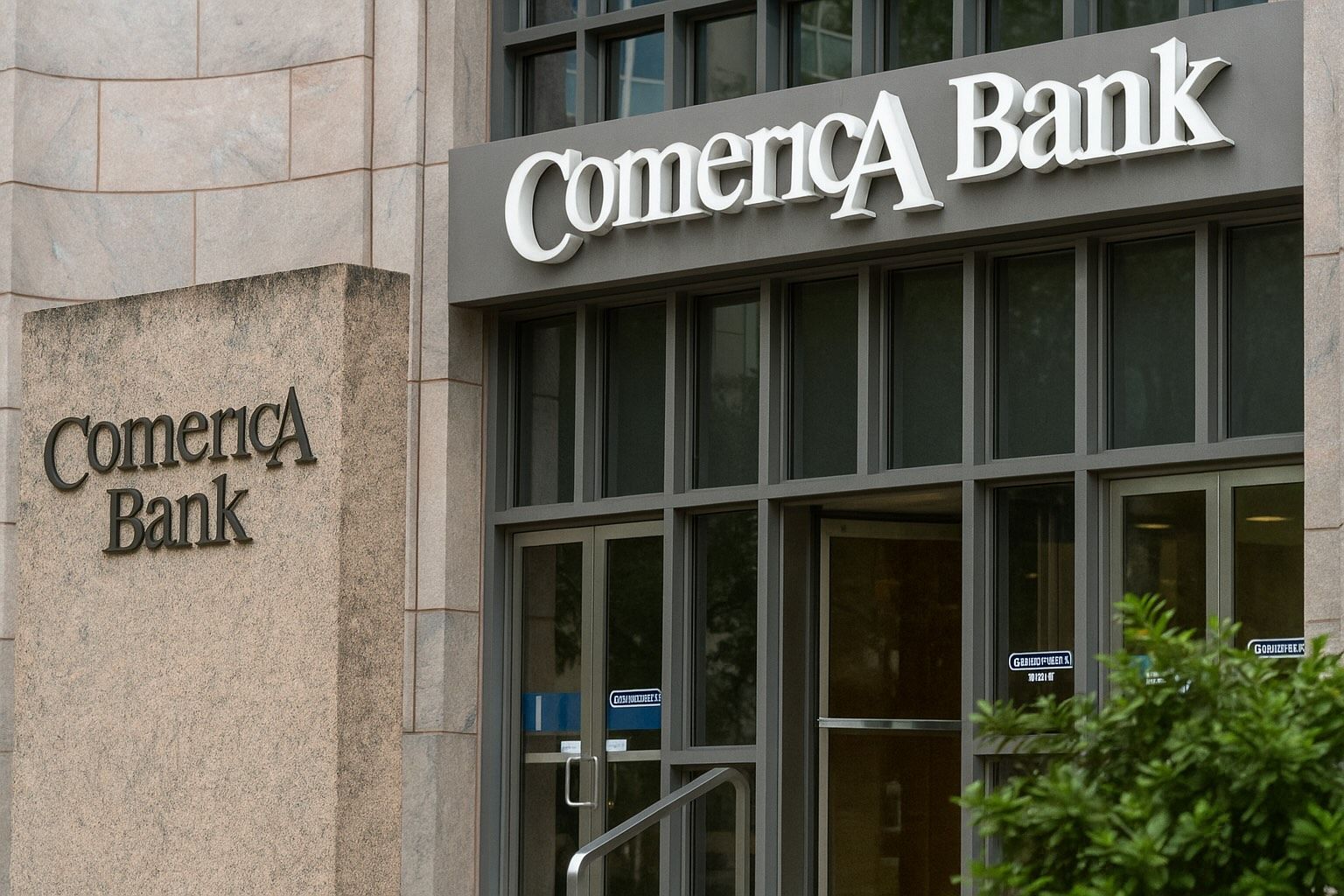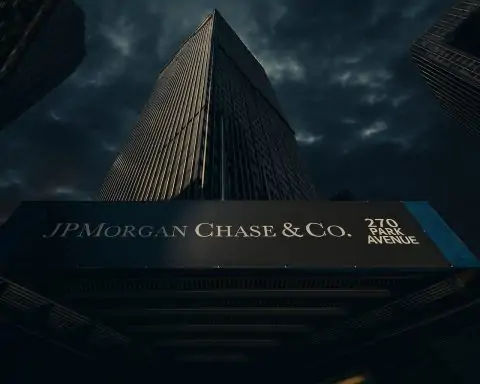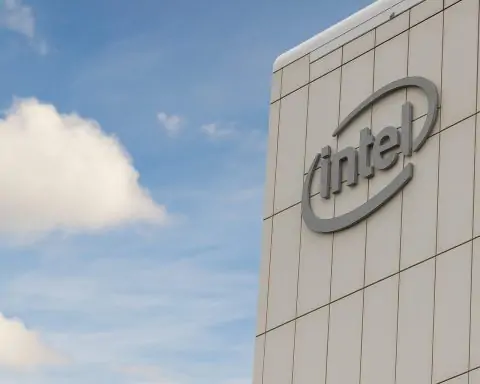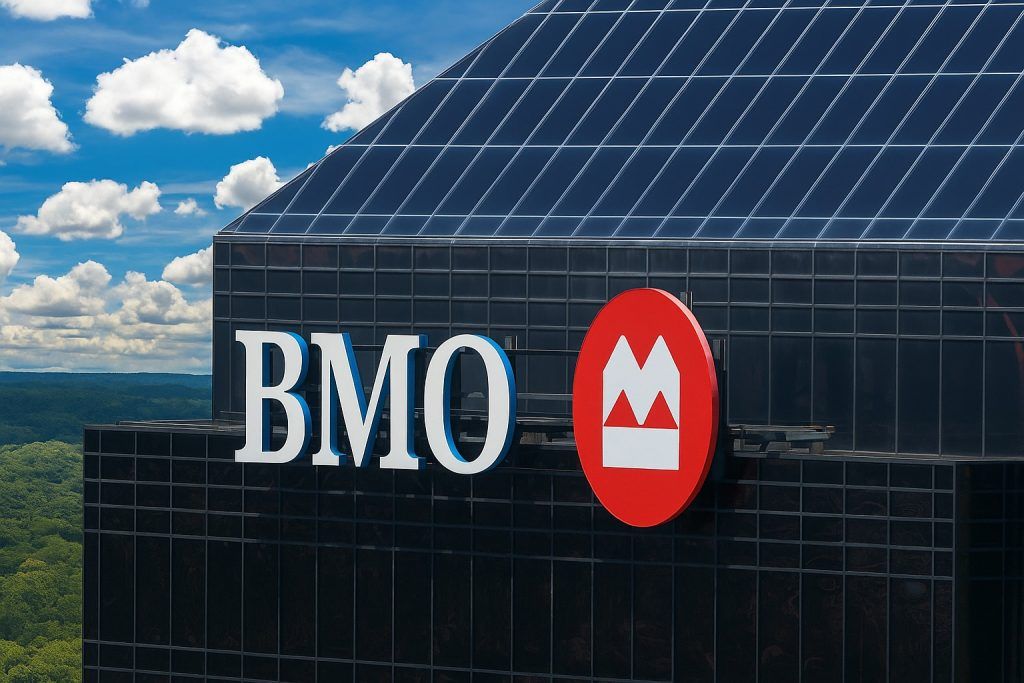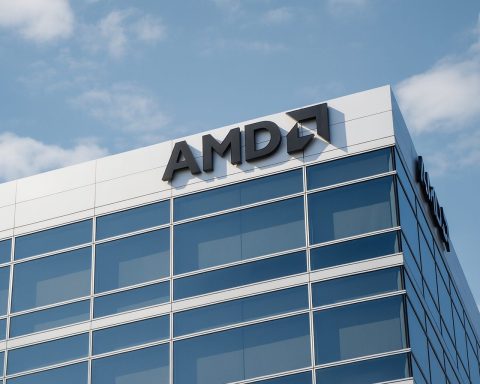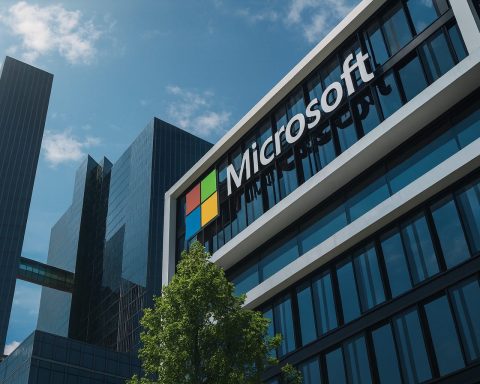- HoldCo Hedge Fund Activism – A tiny Florida hedge fund, HoldCo Asset Management (just nine employees, ~$2.6B AUM), publicly targeted underperforming regional banks. In mid-2025 it took a 1.8% stake in Comerica and blasted management for “disastrous decisions” and “objectively poor performance” [1] [2]. Ultimately, Comerica agreed to be acquired by Fifth Third Bancorp in a $10.9 billion all-stock deal [3]. (HoldCo’s campaign is now aimed at Eastern Bankshares, First Interstate, Columbia Banking and others, demanding sales or strategic changes [4].)
- Comerica-Fifth Third Megamerger – The merger will create the 9th-largest U.S. bank with roughly $288 billion in assets [5]. Each Comerica share will convert into 1.8663 Fifth Third shares (~$82.88, a ≈20% premium) [6]. Comerica stock jumped about 15% on the announcement (to ~$80–81) [7], reflecting the premium, while Fifth Third shares dipped ~2% as it issued new stock [8]. In sum, Comerica shareholders get immediate value and Fifth Third gains a large Sun Belt deposit base [9] [10].
- Regional Banking M&A Wave – Analysts say the Comerica deal is part of a broader consolidation. Regulators have signaled looser merger reviews, and rising regional-bank confidence (e.g. recent Huntington–Cadence and Capital One–Discover deals) is triggering a flurry of tie-ups [11] [12]. As Morgan Stanley’s Jamie Dimon warned on bad loans, “When you see one cockroach, there are probably more,” highlighting underlying credit strains [13]. Activist advisors note that with more deals getting done, “there’s a viable option (for activists) to push for” further sales or operational fixes [14]. Puerto Rico’s law firm Simpson Thacher agrees: a wave of M&A means even well-run banks must consider their future or face pressure [15] [16].
- Stock Prices & Forecasts – Comerica (NYSE: CMA) traded around $77 as of Oct 30, 2025 [17]. Analysts’ consensus 12-month target is about $74.55 (a slight downside) [18]. However, after the merger news some firms raised targets: KBW sees ~$93 (reflecting the 1.8663 exchange ratio) [19], Jefferies $85 and Morgan Stanley $83 [20]. (For comparison, Fifth Third Bancorp (FITB) was upgraded by some analysts post-deal.) Piper Sandler called the merger “a game-changer” for regional banks [21], and Argus Research noted Fifth Third’s move “will likely encourage more boardroom discussions about possible tie-ups” [22].
Activist Investors Target Underperforming Banks
Until recently, regional banks drew little activist attention. That changed when HoldCo Asset Management loudly challenged Comerica’s board. In July 2025 HoldCo issued a report warning that Comerica and other midsize banks had underperformed due to poor management decisions [23] [24]. Within weeks, Comerica’s management began formally exploring strategic options, leading to the Fifth Third deal. HoldCo’s founders Vik Ghei and Misha Zaitzeff explained that many regional bank CEOs were overpaid and under-delivering – and they vowed to “shame” boards into action (via proxy fights if necessary) [25] [26]. After Comerica, HoldCo moved on: it recently threatened a proxy battle at Columbia Banking (Tacoma) and is urging Eastern and First Interstate to either change course or sell [27] [28]. In short, investors see this as a new activist trend in banking. As Reuters observes, “lesser known investors like HoldCo… pushing for changes” have created a “new-found nervousness even at well-run banks” [29]. Law firms advising banks warn that with many institutions struggling to match peer profitability, activists have fertile ground – especially now that regulators are easing merger hurdles [30] [31].
Fifth Third–Comerica Deal: Why It Matters
The Fifth Third–Comerica merger, announced Oct 6, 2025, is the biggest U.S. bank deal so far this year. Comerica Bank (headquartered in Dallas, originally founded 1849 in Detroit) agreed to sell itself for $10.9 billion in an all-stock transaction [32]. This combination will rank as the ninth-largest U.S. bank by assets (~$288B) [33]. Under the deal, Comerica’s shareholders will own about 27% of the merged bank and Fifth Third’s about 73% [34]. Comerica CEO Curt Farmer said the deal will “build on [our] leading commercial franchise… across more markets, while staying true to our core values” [35]. Fifth Third CEO Tim Spence called Comerica’s business “a crown jewel” and said the combination is a “pivotal moment” for growth [36].
Industry analysts praise the strategic fit: Comerica’s strengths in commercial lending and its Dallas–Texas deposit base complement Fifth Third’s consumer banking footprint. Piper Sandler termed the merger “basically, a game-changer” for regional banking [37]. In particular, the combined bank will have scale in fast-growing Sun Belt markets: the merged entity will operate in 17 of the 20 fastest-growing U.S. metros, including Texas, Arizona, California and Florida [38] [39]. Fifth Third plans an aggressive expansion – for example, 150 new Texas branches by 2029 – leveraging Comerica’s presence there [40]. State regulators have even signaled a friendlier M&A climate, and according to Fifth Third, this union “accelerates [our] strategy to build density in high-growth markets” [41] [42].
U.S. Banking Sector Poised for Consolidation
The Comerica deal didn’t happen in a vacuum. After the regional bank turmoil of 2023, many mid-sized banks are reconsidering their independence. Analysts note that only larger banks have the balance-sheet heft and technology to withstand future shocks. A TS2 analysis observes that dozens of midsize lenders are now “reevaluating their strategies” or entering mergers [43]. For example, Capital One agreed to buy Discover for ~$35B earlier in 2025, PNC agreed to buy FirstBank Colorado for $4.1B, and Huntington Bancshares just announced a $7.4B deal for Cadence Bank [44] [45]. These deals signal a “M&A wave… [that] will permanently alter the banking landscape,” as activist PL Capital put it when urging the sale of Horizon Bancorp [46] [47].
Regulators seem poised to approve such combinations. Since mid-2025, federal bank agencies have quietly relaxed merger review standards, aligning with pro-growth policies [48]. Legal experts note the new guidelines “opened the doors” to larger mergers, prompting banks to seek partners “sooner rather than later” [49]. In short, the climate is ripe for more deals. As Argus analyst Stephen Biggar puts it, “record bank stock prices have allowed for a greater currency to do deals,” meaning well-capitalized banks can buy peers with stock [50]. Biggar adds that Fifth Third’s splashy move “will likely encourage more boardroom discussions about possible tie-ups” across the industry [51].
Nevertheless, challenges remain. Some analysts caution about integration risks (technology, culture) and regulatory scrutiny over branch closures or layoffs. Moody’s and other rating agencies have noted the Fifth Third deal’s structure (all-stock) preserves capital ratios and haven’t raised major concerns [52]. Overall, the consensus is that a larger combined bank can better absorb loan losses and compete, reducing the chances of future failures among weakened midsize banks [53] [54].
Stock Reaction and Analyst Outlook
The stock market’s response has been telling. When the Fifth Third–Comerica news broke on Oct 6, Comerica’s share price jumped ~15%, hitting around $80–81 (its highest level in years) [55]. This reflected the generous takeover premium (about 20%). Fifth Third’s stock, by contrast, fell ~2% on merger-day [56]. After some profit-taking, Comerica shares traded around $77.09 on Oct 30, 2025 [57].
Analysts are mixed on the stock’s future. As of late Oct 2025, the Wall Street consensus rating for Comerica is Hold, with an average 1-year price target of about $74.55 [58] (slightly below the recent price). This implies modest downside, perhaps reflecting the risk of deal approval delays and execution risk. However, several analysts raised their targets thanks to the merger math: Keefe, Bruyette & Woods (KBW) boosted its Comerica target to $93 (tying it to Fifth Third’s valuation) [59]. Jefferies raised its Comerica target to $85 [60], and Morgan Stanley to $83 [61], citing strategic benefits and the new ownership stake. (By comparison, Fifth Third’s stock was trading near historical highs – strong equity currency for the deal.)
In short, Comerica’s stock is trading near fair value today. Experts like Sven Mickisch of Simpson Thacher note that rising M&A activity “means there’s a viable option (for activists) to push for” more value-enhancing deals [62]. If this merger closes as planned in early 2026, Comerica shareholders will have already secured a premium price, and Fifth Third’s shareholders hope to reap future growth. Meanwhile, other regional banks face the same calculus: to merge or be targeted.
Comerica Bank: Background and Profile
Comerica Incorporated (NYSE: CMA) is a mid-sized U.S. bank holding company. Founded in Detroit in 1849, it built a commercial banking franchise before moving its headquarters to Dallas in 2007 [63]. Today Comerica operates ~380 branch offices across Arizona, California, Florida, Michigan and Texas [64]. It is one of the 25 largest commercial U.S. bank holding companies, focused on three segments: Commercial Bank, Retail Bank and Wealth Management [65]. As of Dec. 31, 2024, Comerica had about $79.3 billion in total assets [66]. (For context, Fifth Third Bancorp had around $167B in assets on its own as of mid-2024.)
Comerica’s geographic footprint is concentrated in high-growth Sun Belt and Midwest markets. It serves 14 of the 15 largest U.S. metros and has offices in 17 states, including efforts in the Southeast (North Carolina) and Mountain West (Colorado) [67]. Comerica also famously held naming rights to Detroit’s Comerica Park (home of the Tigers) – a relic of its Detroit roots [68]. That name-rights deal extends through 2034, and both banks say they will honor it for now [69].
On the financial side, Comerica had lagged peers in profitability leading up to 2025, partly due to the 2023 banking turmoil. Deposits outflowed to larger banks during the SVB/First Republic panic, and high interest rates dented its net interest margins. HoldCo’s critique was that Comerica’s board did not adapt quickly enough, even as smaller rivals were being acquired. Comerica’s CEO Curt Farmer admitted the crisis made management think “more and more about the need for scale, for a bigger, granular retail deposit base” [70]. In other words, Comerica’s management came to see consolidation as necessary.
Before the takeover, Comerica’s credit ratings were stable (Moody’s and Fitch had it at investment grade), but agencies put Comerica “under review” for possible upgrade after the acquisition was announced [71]. Its stock carried a modest dividend yield (~3% historically) and most analysts rated it a “Hold” or “Market Perform” through 2025 [72] [73]. Post-announcement, many institutions declared Comerica and Fifth Third ratings unaffected due to the all-stock nature of the deal.
Looking ahead, Comerica’s story now intertwines with Fifth Third’s growth plans. If regulators approve the merger by early 2026 (as planned), Comerica will cease to exist as an independent brand. Fifth Third has promised to integrate Comerica’s branches and customer base thoughtfully. For Comerica Park in Detroit, both banks have said the “Comerica” name stays for now (the naming contract runs to 2034) [74]. But even such local issues are dwarfed by the financial implications: Comerica’s 175-year run as a standalone bank is ending, a casualty of activist pressure and an industry now racing to consolidate.
Sources: Reporting from Reuters and TS2.Tech (TechStock²) [75] [76]; CNBC and financial press [77] [78]; Comerica Inc. filings [79]; and recent analyst commentary [80] [81].
References
1. ts2.tech, 2. ts2.tech, 3. ts2.tech, 4. www.reuters.com, 5. ts2.tech, 6. ts2.tech, 7. ts2.tech, 8. ts2.tech, 9. ts2.tech, 10. ts2.tech, 11. ts2.tech, 12. www.thestar.com.my, 13. www.reuters.com, 14. www.reuters.com, 15. www.reuters.com, 16. ts2.tech, 17. www.marketbeat.com, 18. www.marketbeat.com, 19. www.investing.com, 20. www.investing.com, 21. ts2.tech, 22. ts2.tech, 23. ts2.tech, 24. ts2.tech, 25. intellectia.ai, 26. ts2.tech, 27. www.reuters.com, 28. intellectia.ai, 29. www.reuters.com, 30. ts2.tech, 31. www.reuters.com, 32. ts2.tech, 33. ts2.tech, 34. ts2.tech, 35. ts2.tech, 36. ts2.tech, 37. ts2.tech, 38. ts2.tech, 39. ts2.tech, 40. ts2.tech, 41. ts2.tech, 42. ts2.tech, 43. ts2.tech, 44. ts2.tech, 45. www.thestar.com.my, 46. www.reuters.com, 47. www.thestar.com.my, 48. ts2.tech, 49. ts2.tech, 50. ts2.tech, 51. ts2.tech, 52. ts2.tech, 53. www.reuters.com, 54. ts2.tech, 55. ts2.tech, 56. ts2.tech, 57. www.marketbeat.com, 58. www.marketbeat.com, 59. www.investing.com, 60. www.investing.com, 61. www.investing.com, 62. www.reuters.com, 63. investor.comerica.com, 64. investor.comerica.com, 65. investor.comerica.com, 66. investor.comerica.com, 67. investor.comerica.com, 68. ts2.tech, 69. ts2.tech, 70. ts2.tech, 71. www.investing.com, 72. www.marketbeat.com, 73. www.investing.com, 74. ts2.tech, 75. www.reuters.com, 76. ts2.tech, 77. intellectia.ai, 78. ts2.tech, 79. investor.comerica.com, 80. www.reuters.com, 81. www.investing.com
